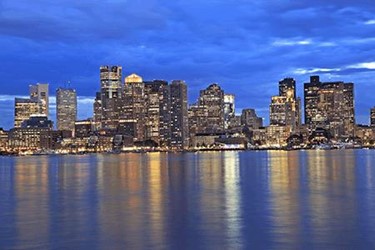Can Boston And San Francisco Remain The Center Of Biopharma's Universe?

By Rob Wright, Chief Editor, Life Science Leader
Follow Me On Twitter @RfwrightLSL

This past October, our company’s OutsourcedPharma Conference and Exhibition hosted one of its three annual conferences, which are held in leading U.S. biotech clusters (i.e., Boston, San Diego, and in San Francisco). Louis Garguilo, chief editor for Outsourced Pharma, also serves as the conference chair for these events. Following the event he shared some anecdotal insights from this year’s San Francisco conference. According to Garguilo, attendees at the San Francisco event, who are also based in the greater San Francisco area, noted how it is becoming increasingly difficult to attract top talent to relocate to San Francisco. They cited “too crowded,” “too expensive,” and a host of other reasons.
But San Francisco is not alone in its dilemma, and one wonders how much longer biopharmaceutical companies will be willing to pay to be in hottest biotech clusters (e.g., Boston, San Francisco). For example, a 2011 article in Forbes graphically shows the cost of lab space in some of these areas, noting Cambridge/Boston as an outlier with its moderate high vacancy rate while also being able to maintain the highest rental costs. But despite the allure of Boston and San Francisco, we are seeing some companies opt to have their biopharmaceutical businesses located elsewhere. For example, Abeona Therapeutics recently dedicated its new gene therapy manufacturing facility in Cleveland, OH. And while not considered a hot biotech cluster, Cleveland does have all the makings of what a biotech cluster needs — a thriving medical community [e.g., The Cleveland Clinic and University Hospitals), about 54 universities in the greater Cleveland area, and plenty of employers seeking top talent.
Where To Place Your Future Life Science Cluster Bets
Joel Marcus is CEO for Alexandria Real Estate Equities, an urban office REIT uniquely focused on collaborative life science and technology campuses in AAA innovation cluster locations. In a recent Bloomberg interview he noted Cambridge, MA, and San Francisco continue to be the leading areas for life science clusters. When asked about up-and-comers, Marcus said, “Seattle is an emerging market as you know; certainly Amazon has had a lot to do with that.” But he also references New York City, San Diego, and Texas, which has the benefit of no state tax. As for cities in Texas, Marcus mentions Dallas and Houston, but has a particular affinity for Austin.
I think one of the cities that should be on everyone’s future bio cluster list is Philadelphia. One of the most significant life science successes remains Spark Therapeutics, which evolved out of the Children’s Hospital of Philadelphia. Like Cleveland, Philly has a thriving medical community, 101 colleges within 50 miles of the city, reasonable rent, and close proximity to the New Jersey biopharmaceutical community. Perhaps this is why the 2018 lineup for planned OutsourcedPharma conferences includes Philadelphia.
Insight On Clusters From Three Biopharmaceutical Industry CEOs
As part of putting together Life Science Leader’s annual December outlook issue, we posed the question, “What mega-cities/regions will have the biggest impact on biopharma in 2018 and beyond?” to three biopharmaceutical industry CEOs. As we did not have room for their response within the print edition, we opted to include their insight here in our free to access Beyond The Printed Page exclusive online feature.
And while Beyond The Printed Page does not require a subscription, Life Science Leader does. So don’t miss out on hearing what all 12 of this year’s CEO participants have to say regarding what biopharma can expect for 2018 and beyond — subscribe today, and enter coupon code LSC29 to take advantage of our $29 holiday special promotion. We hope you enjoy this latest installment of Life Science Leader’s Beyond The Printed Page.
What Mega-Cities/Regions Will Have The Biggest Impact On Biopharma In 2018 & Beyond?
Michelle Dipp, Managing Director, General Atlantic (former CEO of OvaScience): We often think about regions in terms of innovation. But it is interesting to consider which regions can influence an industry just through its sheer size. As such, I expect we will see significant impacts on the biopharmaceutical industry from China and India, where population and growth trends, combined with the lifestyle changes associated with a growing consumer class, will drive tremendous need for healthcare.
Mitch Gold, Alpine Immune Sciences: If you think about the future and how big data and computer sciences will deeply impact how we go about drug development, and what some of the biggest and most innovative companies are doing (i.e., Apple positioning itself squarely in the path of healthcare delivery, and Amazon making a significant push to make healthcare a key part of its Prime membership), then you have to believe that the way healthcare is delivered today — and the way drug development is done in the future — will be done in cities like Seattle and San Francisco.
Julia Owens, Millendo Therapeutics: It is hard to argue that Cambridge/Boston isn’t the dominant region in biopharma today. Many companies opting to open a U.S. office almost immediately seek to do so in the Cambridge/Boston area, and many investors from other regions are also seeking to have a presence in the area. But biopharma’s move to occupy Boston is beginning to cause some strain, and rents in central Cambridge are becoming cost prohibitive, and long commutes are less appealing for some. That said, I don’t expect either will unravel what has been built in Boston/Cambridge anytime soon.
